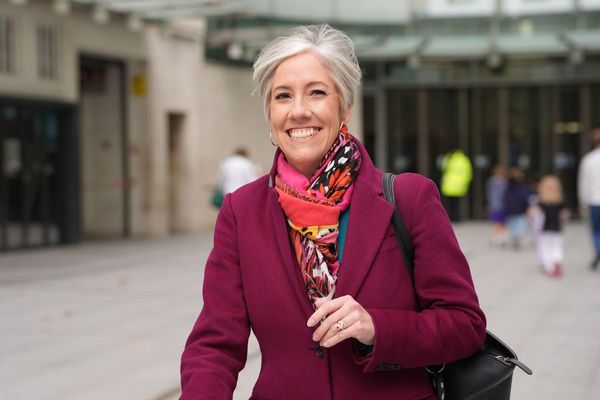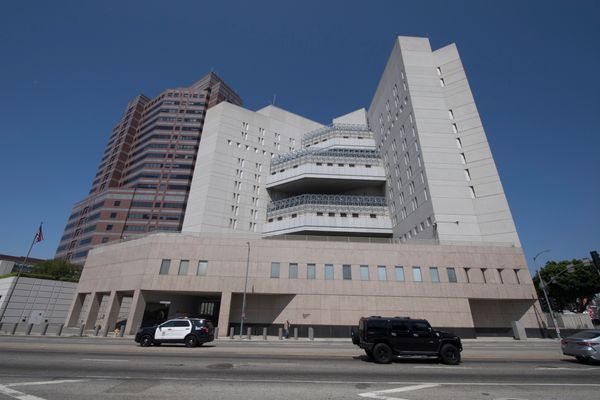Some of the best ETFs and mutual funds continued their downward spiral as the slaughter in the markets continued in September. Interest rates shot up, while more indexes plunged into bear market.
U.S. diversified funds fell more than 8% during the month, to close off the third quarter with a 4.24% loss, according to Refinitiv Lipper data. For the year, they're now down 23.35%.
The S&P 500, Dow Industrials and Nasdaq sank between 9% and 10% in September. Their third-quarter losses amount to 4% to 7%. Year to date, they sank 24%, 21% and 32%, respectively.
The 10-year U.S. Treasury yield surged 72 basis points to end the month at 3.83%, briefly touching on 4%. Short-term rates also rose as the Federal Reserve hiked rates by another 75 basis points.
"September was a roller-coaster ride, really reflective of what we've seen earlier in 2022," said Greg Bassuk, CEO at AXS Investments. He calls it a "three-ring circus," with inflation, the Fed's interest-rate policy and global hawkish environment impacting the markets.
"It's not just the U.S., it's not just our Federal Reserve, it's a coordinated central bank set of rate hikes," he said. "And that is causing investors even greater concerns around when rates hikes might subside."
Best ETFs: Few Places To Hide
It was a month of risk-off sentiment, and nearly every U.S. diversified equity fund category fell. World equity funds sank even more, on the back of a stronger dollar.
Sector funds got slammed with real estate, science and technology, telecommunication, and commodities energy funds among the biggest losers. Biotech funds were among the best mutual funds thanks to some positive news in the sector.
"Biotech is the only subsector that's done well," said Ralph Bassett, head of investments at abrdn. "A lot of that is coming from Biogen's news (on Sept. 28) around Alzheimer's. But biotech and health care really had been lagging year to date."
ETFs also suffered. U.S. diversified stock ETFs sank, with dividend stocks holding up the best. Within a slew of negative returns, Pacer Trendpilot US Large Cap stood out as the only fund with positive performance, up 0.16% in September and 0.27% in the third quarter. The fund is down 9.34% the year so far, as are most of the other funds in the category.
Inflation Drives Markets, Best ETFs
Within sector ETFs, silver and gold miners came back into fashion. IShares MSCI Global Silver & Metals Miners, Global X Silver Miners, ETFMG Prime Junior Silver Miners, iShares MSCI Global Gold Miners and VanEck Gold Miners all posted positive returns for the month. Those funds, however, are still down 25% to 34% this year.
Inflation will continue to be a big market driver, said AXS' Bassuk. "Likewise, as we move into corporate earnings season over the next couple of weeks, it's going to be another driver of significant market volatility."
He added that whether there's a bit of positive or negative news, "investors are overreacting in both directions. Because what they're really striving for is certainty, and that's what we think is going to be missing, probably through the end of the year."
There are some areas that create unique opportunities for investors, he said. Alternative investments with downside protection and less correlation to the markets, or merger-arbitrage strategies are an example. Inflation-sensitive assets such as commodities and U.S. Treasury inflation-protected securities (TIPS) might be an option for active investors.
Finding Offbeat Plays
AXS Merger Fund (GAKIX) is a pure-play merger arbitrage strategy that invests in stocks of companies that are part of mergers, takeovers or other corporate events. It strives to provide less volatility than the market. The $58 million fund is up 2.48% this year and charges an adjusted annual fee of 1.52%.
Abrdn's Bassett says that investors more and more have been positioning defensively. And while he thinks that we could have a slightly sharper recession than anticipated a month or two ago, "it's far from disastrous."
"There was a fairly aggressive pricing of downside risk earlier this year," he said. "But across other sectors, that just hasn't happened yet. So, things that have performed very well have been the defensive (sectors) such as utilities and consumer staples."
That's been an interesting move, he noted, as those lower-growth, rate-sensitive sectors typically lag, "but that hasn't been the case." As such, he believes there will be a bid for risk assets at some point, where cyclical sectors, such as banks and industrials, could start to outperform again.
This will likely not happen before 2023, he said, but for investors who have a long-term view, it's important to keep in mind the potential opportunity cost. Meanwhile, the market is still recalibrating itself. Investors will need to get better visibility about when rates might start to come down, which would be supportive of growth and stock valuations. That time horizon is closer to 12 to 18 months.
"That's going to be fairly important, because you end up in a dynamic where growth companies, by and large, will have better fundamentals, just because they tend to be more detached from the macro environment," explained Bassett. "Their valuations had become so sensitive to the rate environment, and that's really worked against a lot of stocks on a year-to-date basis."
Get More Defensive With Best ETFs?
Nevertheless, he advises investors to be patient and not become much more defensive.
Bassett is lead manager on several funds, including abrdn US Small Cap Equity Institutional (GSCIX). The $734 million fund is down 26% this year and charges an annual fee of 0.99%.
On the bond front, rising interest rates penalized nearly every fund in September. General domestic taxable funds lost an average of 4% during the month and are down over 12% on the year. World income funds showed an even greater decline.
Among the best ETFs, Simplify Interest Rate Hedge stood out as the big winner, soaring over 20% in September and the third quarter. The $341 million fund is up a whopping 74% this year. It hedges against movements in interest rates via interest-rate options. Its annual fee is 0.5%.
A New Tide For Bonds
For the bond market investors in general, however, the tide may finally be turning.
Charles Tan, co-chief investment officer at American Century Investments, believes the 10-year yield may top out soon, in the range of high-3% to 4%. The reason is the recession risk will finally start weighing on inflation and the 10-year yield.
"It seems like inflation and the rates are in the final innings," said Tan.
That said, he believes the structural inflation forces are pointing to a higher inflation level than what we've seen in the past for the long term. The structural forces include deglobalization and labor force shortages. But "when you have a recession, that will bring down the cyclical components of inflation from the demand side," he said.
"That is when likely inflation will come down from the 8% to 9% to a lower level," Tan said. "We don't know what that level is, but structural inflationary constraints will likely hold it up from falling to the Fed's desired target of 2%."
Watching For Recession
However, recession will also raise credit risk. Tan said the corporate bond market has been holding up quite well. Spreads have widened but not as bad as in prior recessions. So, that area could sell off more as the fundamentals decline.
"Fixed income has had the largest decline year to date going back 50 years because of the very quick interest rate pick up," he added. With long-term rates nearing 4% and short-term rates around 4.25% to 4.5%, "it's starting to pay for investors to sit in cash. So, the entire yield curve is now looking more attractive."
The front-end of the yield curve (short-term rates) provides safe cash for investors. The back end (longer-term rates) is finally rewarding investors for longer duration bets and providing a hedge against equity risk.
Within the credit markets, Tan has been underweight high-yield corporate bonds and overweight high-quality asset-backed securities and collateralized loan obligations. He's also been underweight consumer credit.
Nevertheless, he believes as deleveraging hits the corporate market, it will be "a rough and long ride, and investors should be prepared and take on defensive positioning. Stay away from corporate credits with weak fundamentals and tight valuation."







